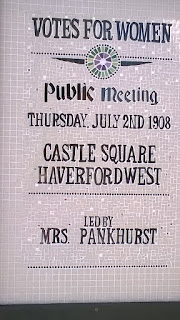We can all probably name some of England’s monarchs but I
bet there is 1 you can’t. I like to introduce him to you.
Henry the Young King
Henry was born on the 28th February 1155 at the
Palace of Bermondsey. He was the second son of King Henry II and Queen Eleanor
of Aquitaine. After the death of his elder brother in 1156 aged 3 Henry became
heir to the throne of England. He married Margaret of France, the daughter of
King Louis VII of France (Eleanor of Aquitaine’s first husband) and Constance
of Castile, in 1172 in Winchester Cathedral. The couple were betrothed when he
was 5 and she was 2. The couple had 1 son William who was born prematurely in
1177 in Paris, France. William died when he was just a few days old.
Young Henry was described as being a tall strong man with
red hair and blue eyes and being handsome. He was well skilled at fighting and
took part in many tournaments throughout Europe making his a sort of celebrity.
Henry was crowned King of England, Duke of Normandy and
Count of Anjou at Westminster Abbey in 1170 when he was 15 years old. What’s
unusual about this, well his father was still alive and was still actively
King. This made Henry a joint king with his father King Henry II. So
technically the county had 2 monarchs, King Henry II and King Henry III,
(although Young Henry was never was given a regnal number as it was assumed he
would take the title King Henry III after the death of his father). So if Young Henry was actually Henry III, this
makes Henry III the IV and so on so King Henry VIII was actually King Henry IX.
 |
King Henry II of England
So how did this work, well at the time England ruled great
portions of France through Henry’s parents and Queen Eleanor of Aquitaine’s
family. This meant that the king could not be present in his entire realm. The
plan was for young Henry to take some of the responsibility, but in truth this
never happened. It seems King Henry II only really crowned young Henry to make
sure his heir was in place. This was because of the troubles in the accession
after the death of his grandfather King Henry I. King Henry I only surviving
child was a girl, Matilda, so many felt the crown should go to his nephew
Stephen. Matilda didn’t like this to say the least and it led to what was known
as the Anarchy (the struggle and war between Stephen and Matilda lasting from
1135 – 1154). The main struggles ended when Stephen named Matilda’s son Henry
(King Henry II) as his heir. So by crowning the young Henry it solidified his
sons claim to throne after he died.
But there was a problem young Henry wanted some power to go
with his titles. This lead to young Henry rebelling against his father in 1173.
He was joined by many of the leaders of the regions of France. In truth young
Henry had been at odds with his father since 1170 when Henry’s great friend and
father figure Thomas Beckett was murdered, perhaps on the orders of his father.
It is also felt that Young Henry’s mother Eleanor of Aquitaine was involved in
the struggle siding with her son and encouraging his brothers Geoffrey, Richard
and John to side with him. This lead to Eleanor being imprisoned for the next
16 years, which turned the family against itself due to the close bond between
mother and sons.
 |
Rouen Cathedral where Henry the Young King and his brother
King Richard I heart are buried
The battles with his father came to a head in 1183 when
Young Henry’s troops along with those of his brother Geoffrey and the King of
France attempted to ambush King Henry II at Limoges, France. This ambush failed
and young Henry had to flee into Aquitaine. It was during the period of exile
that Young Henry died at Martel in Quercy, France from dysentry. He was
initially buried at the cathedral of Le Mans and later moved to Rouen
Cathedral, France.
What happened to the family after this? Well King Henry II
ruled until his death in 1189. Geoffrey died in 1186 in Paris leaving behind a
widow and 3 children, his son Arthur was named heir to the new King (he never
became king). Richard became King on the death of his father and spent much
time on crusade or imprisoned in France, during which time the country was run
by his mother Eleanor. Richard died in 1199 in his mother’s arms from an
infected arrow wound. And John became King after Richard died and had an
eventful rule. Eleanor died in 1204 at the abbey of Fontevraud, France where
she was a nun. Her tomb is in the main church of the abbey where she lays
alongside her husband King Henry II, her son King Richard I and her daughter in
law Isabella of Angouleme (King John’s second wife).











